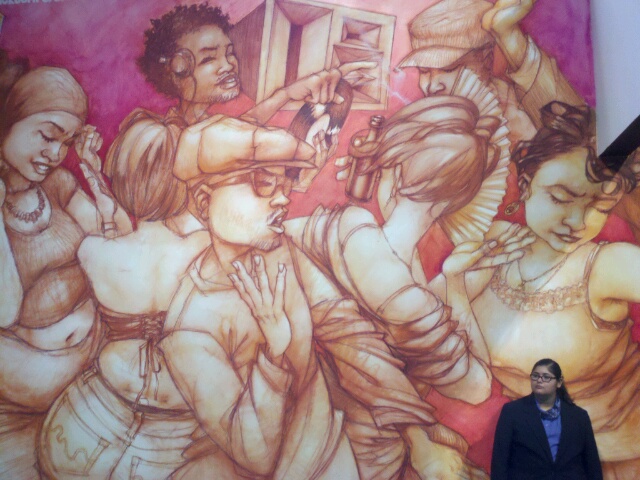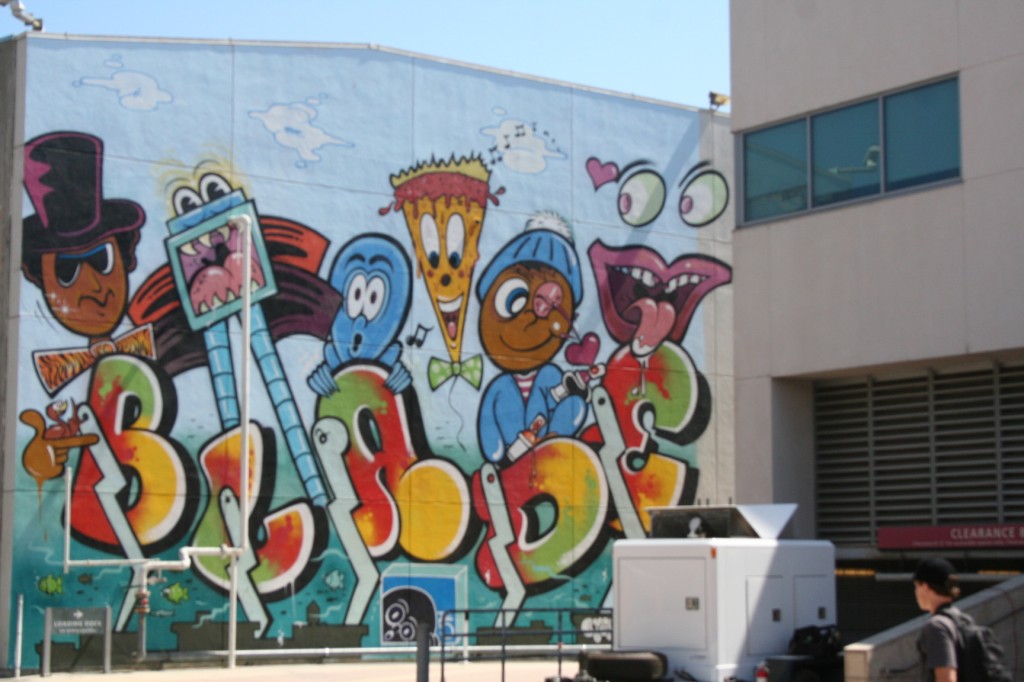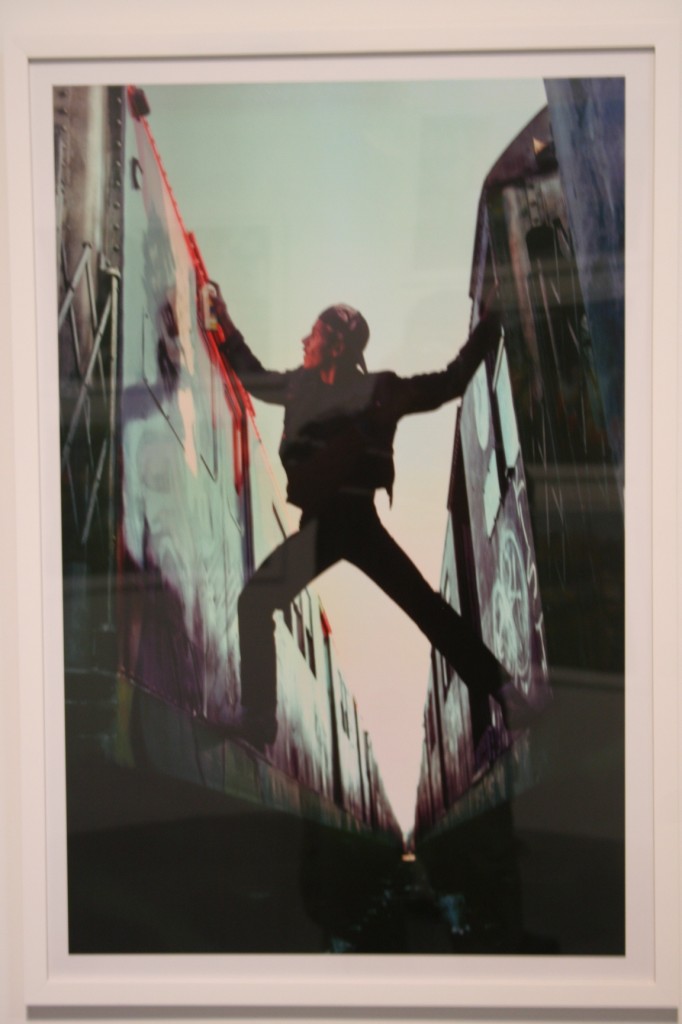Throw It UP!
Throughout history, fashion designers like Halston and cultural icons like Andy Warhol have famously looked to the kids in the streets to keep their fingers on the pulse of what’s truly hot. Since its inception, graffiti has served as the visible “voice” of the youth in urban areas. Wiles correspondent, Marc Alexander, recently checked out the Art in the Streets exhibit at the world-famous Museum of Contemporary Art in Los Angeles. Here’s what he saw.
A Review of Art in the Streets
By Marc Alexander
 My relationship with graffiti is over thirty years old. I remember my first trips to downtown Philadelphia with my boy Calvin on the moving electric box called the El Train. We were suburban kids with urban hearts. We would eagerly each find a window as the train left the depot and headed into the city – hoping to see that a new “piece” of graffiti had popped up in the rogue art gallery the taggers had created on the tops of all the buildings along the route. Our fascination with the outlaw art form continued into the classroom, where our paper bag-covered school books became murals in our attempt to duplicate the amazing colors and shapes we had seen thrown up on the walls in the city.
My relationship with graffiti is over thirty years old. I remember my first trips to downtown Philadelphia with my boy Calvin on the moving electric box called the El Train. We were suburban kids with urban hearts. We would eagerly each find a window as the train left the depot and headed into the city – hoping to see that a new “piece” of graffiti had popped up in the rogue art gallery the taggers had created on the tops of all the buildings along the route. Our fascination with the outlaw art form continued into the classroom, where our paper bag-covered school books became murals in our attempt to duplicate the amazing colors and shapes we had seen thrown up on the walls in the city.
The Art in the Streets exhibit showcases the history and progress of graffiti as an art form from the 1970s to the worldwide phenomenon it continues to be today. Inside the giant open space visitors can’t help but be struck by the attack of colors and marvel at the ways that this genre, that some still consider vandalism, has morphed into serious art.
 The exhibit encompasses the whole history of “street art” – from its humble beginnings when street legends like Cornbread and Kilroy would scrawl their names on any surface they could get away with, to today’s artists who have taken it to some pretty incredible places. There were also sections featuring the work and photographs of Los Angeles taggers from various cultures, including the Latino Cholos and the infamous Crips. The highlight of this section was a metallic orange graffiti covered ice cream truck that looks like it came right off of a Cheech and Chong movie set.
The exhibit encompasses the whole history of “street art” – from its humble beginnings when street legends like Cornbread and Kilroy would scrawl their names on any surface they could get away with, to today’s artists who have taken it to some pretty incredible places. There were also sections featuring the work and photographs of Los Angeles taggers from various cultures, including the Latino Cholos and the infamous Crips. The highlight of this section was a metallic orange graffiti covered ice cream truck that looks like it came right off of a Cheech and Chong movie set.
Several female artists were highlighted in the exhibit, including Swoon, Margaret Kilgallen, and Pink Lady. Pink Lady’s three pieces especially, popped with color, combined with a gritty street aesthetic to convey several different emotions.
 An entire room was dedicated to the creations of Ramelzee, an MC/tagger who also rose to stardom in the movie Wild Style. The Ramelzee collection included graffiti-covered sculptures, objects, and toys. Some were funny and some – like the skulls and toy monsters – were kind of disturbing. The multimedia experience also included several video installations featuring documentaries on the genre.
An entire room was dedicated to the creations of Ramelzee, an MC/tagger who also rose to stardom in the movie Wild Style. The Ramelzee collection included graffiti-covered sculptures, objects, and toys. Some were funny and some – like the skulls and toy monsters – were kind of disturbing. The multimedia experience also included several video installations featuring documentaries on the genre.
My favorite part of the exhibit had to be the Fun Gallery. The “show-within-the –show” – as it was billed – featured art, photographs, and the movie Wild Style on a loop. It captured perfectly the feel and raw energy of when uptown New York City graffiti artists were introduced and embraced by the downtown art patrons.  The pieces in this section carried me back to hip-hop’s formative years, especially the two giant walls-worth of graffiti-covered subway cars. Artists such as Dondi, Futura 2000, and the legendary Lee all had several pieces on display and, as I stood there looking up at them, I could almost hear an old school DJ scratching in my head.
The pieces in this section carried me back to hip-hop’s formative years, especially the two giant walls-worth of graffiti-covered subway cars. Artists such as Dondi, Futura 2000, and the legendary Lee all had several pieces on display and, as I stood there looking up at them, I could almost hear an old school DJ scratching in my head.
The space containing the Art in the Streets exhibit is huge and open and just when you think you are finished, there is another corridor of work to see. Because of the intricacies of street art, you have to do more than a cursory look to ingest everything that you see. To appreciate the talent and the detail that has gone into the art you really have to look closely. Some might still contend that street art is on the fringe of the law, and that its practitioners are criminal and should be locked up. But anyone who goes to see Art in the Streets will recognize that the genre has traveled far from the streets, and has influenced cultures all over the world.
 Marc Alexander is a Los Angeles-based writer, photographer and purveyor of urban culture.
Marc Alexander is a Los Angeles-based writer, photographer and purveyor of urban culture.